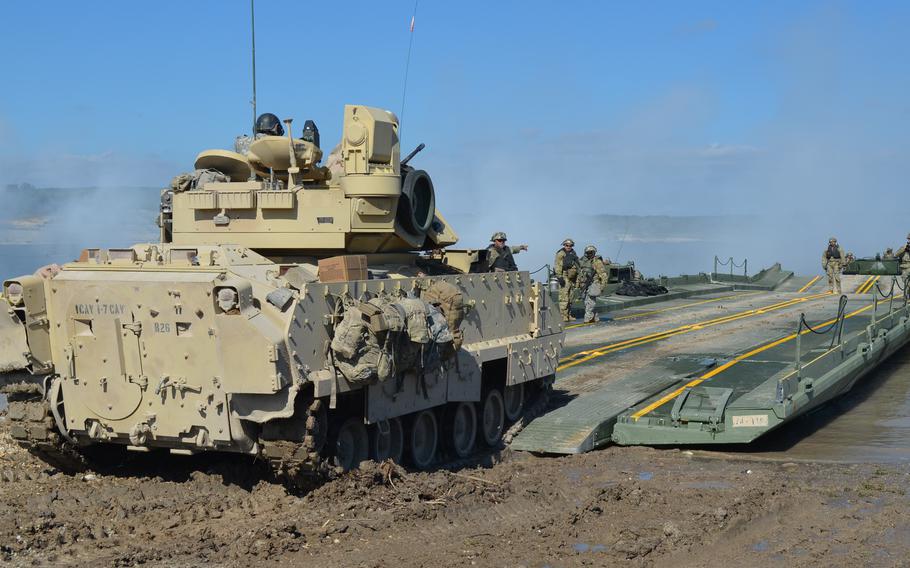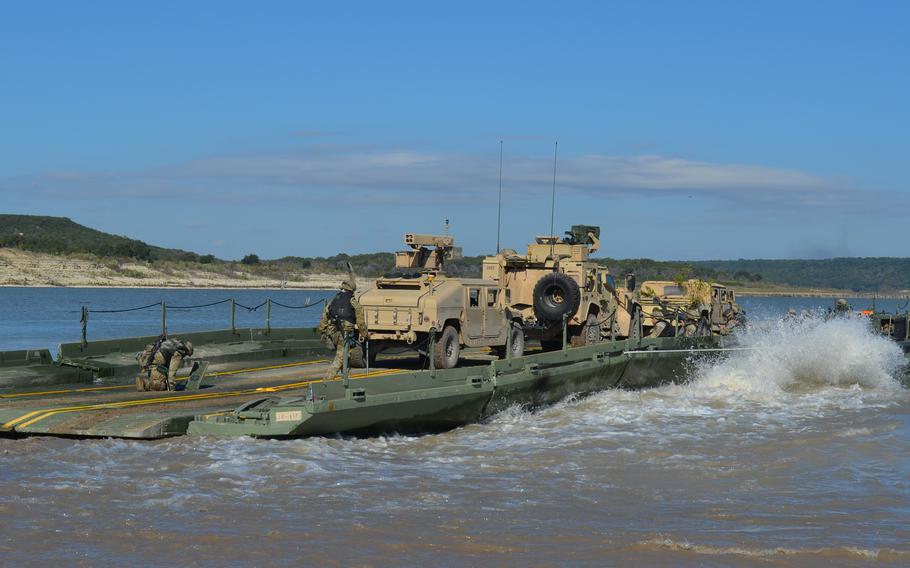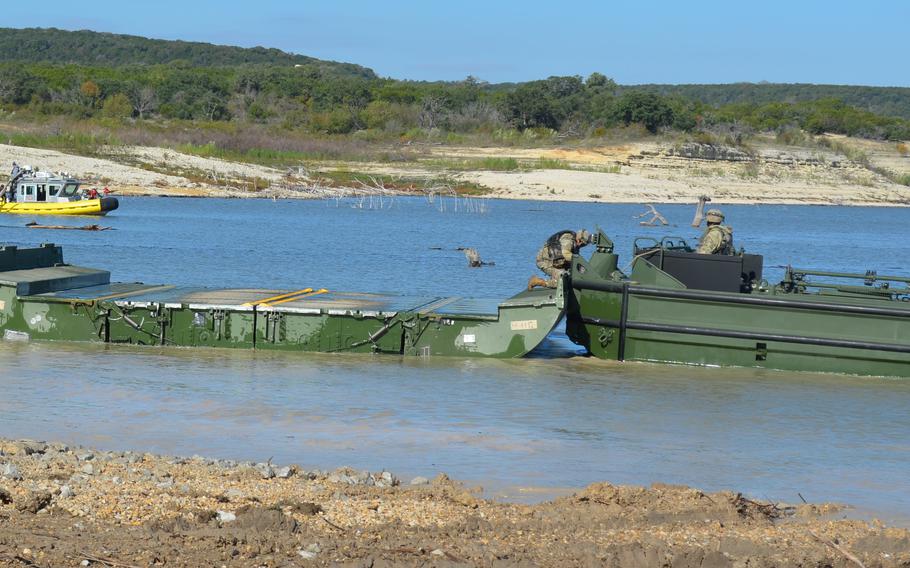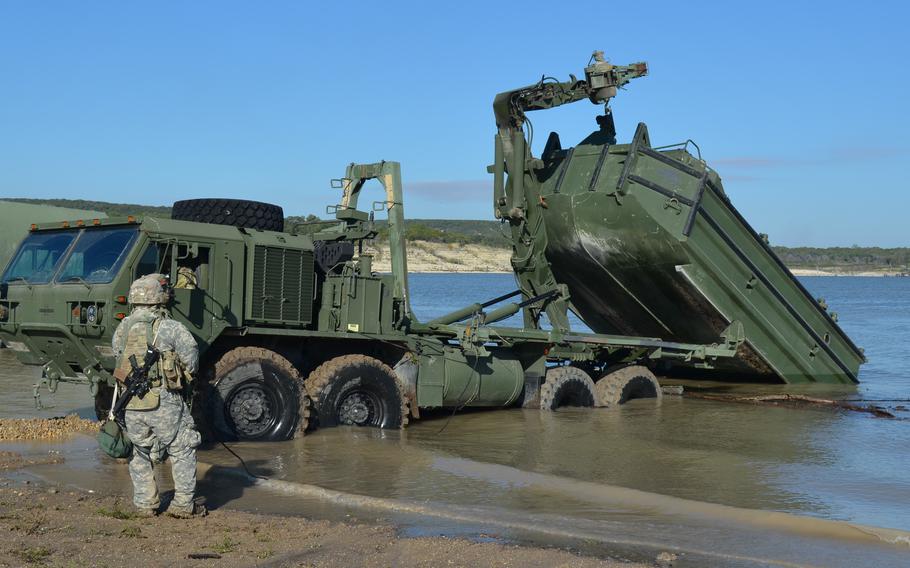
A Bradley Fighting Vehicle is loaded onto a bridge at Fort Cavazos, Texas, on Nov. 3, 2023, as part of a division-level training exercise. (Rose L. Thayer/Stars and Stripes)
FORT CAVAZOS, Texas — Hundreds of Army engineers spent Friday building seven-piece floating bridges to move roughly 870 combat vehicles across a lake as part of the largest training exercise conducted at Fort Cavazos in three years.
Water crossings can be dangerous because of how many vehicles and equipment are required — as well as the added danger of troops falling into the water, said Sgt. 1st Class Richard Judd, who traveled from the Army Engineer School at Fort Leonard Wood, Mo., to assist and observe the exercise.

Combat vehicles are transported across Belton Lake at Fort Cavazos, Texas, as part of a division-level training exercise Nov. 3, 2023. (Rose L. Thayer/Stars and Stripes)
“It involves a lot of synchronization and communication with many different assets within the Army and many different [occupations],” he said. “It can be very difficult.”
Soldiers backed trucks into Belton Lake, dropping bridge-building boats into the water followed by pieces of a bridge that unfolded on the water to reveal a stretch of road. The boats then pushed the bridge pieces around and connected them to form long, ferry-like structures made for moving combat vehicles.
Once completed, soldiers from the 1st Cavalry Division drove Bradley Fighting Vehicles, fuel trucks and mine-resistant, all-terrain vehicles onto the floating bridges. The boats then attached themselves to the sides of the bridges and steered everything across the lake, delivering combat power on the opposite side.

A soldier connects a bridge building boat to a piece of bridge to begin building a seven-float bridge to transport combat vehicles across Belton Lake at Fort Cavazos, Texas, as part of a division-level training exercise Nov. 3, 2023. (Rose L. Thayer/Stars and Stripes)
“Speed is important as they build this raft. The faster they build this raft, the faster the elements can get across to provide that support,” Judd said.
The water crossing began Friday morning and was expected to take 48 hours to complete, according to Lt. Col. Tania Donovan, spokeswoman for III Corps and Fort Cavazos. It’s one part of a nearly two-week exercise that began Monday and involved roughly 6,000 soldiers.
The training provided soldiers training on large-scale combat operations and helped Fort Cavazos improve its newly established Gap Crossing Training Center, which aims to be a top training site for the Army to improve its ability on these type of water crossings.

Soldiers lower a bridge building boat into the Belton Lake at Fort Cavazos, Texas, as part of a division-level training exercise Nov. 3, 2023. (Rose L. Thayer/Stars and Stripes)